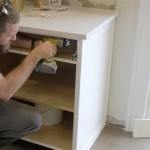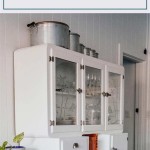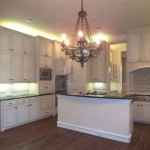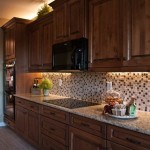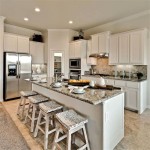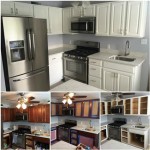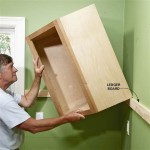Lock A Kitchen Cabinet: A Comprehensive Guide
Keeping your kitchen cabinets locked is an essential security measure that prevents unauthorized access to your food, utensils, and other items. Whether you have young children, pets, or simply want to keep your kitchen organized, installing a lock on your cabinets is a practical solution.
Choosing the Right Lock
Selecting the appropriate lock for your kitchen cabinet depends on various factors, such as the type of cabinet, your security needs, and your budget. Here are a few common types of locks to consider:
- Magnetic Locks: These locks use a magnetic mechanism to keep the cabinet doors closed. They are easy to install and operate, making them a popular choice for many homeowners.
- Childproof Locks: If you have young children, childproof locks are designed to prevent them from opening cabinets that contain hazardous or dangerous items. These locks are typically simple to install and can be easily opened by adults.
- Combination Locks: Combination locks provide a higher level of security by requiring a specific code or combination to open the cabinet. They are more challenging to install than other types of locks but offer increased protection.
- Keyed Locks: Keyed locks are a classic option that provides reliable security. They require a key to open the cabinet, making them suitable for storing valuable or sensitive items.
Installing the Lock
Once you have chosen the right lock for your cabinet, carefully follow the installation instructions provided with the product. Here are some general steps involved in installing a cabinet lock:
- Measure and Mark: Determine the position of the lock on the cabinet door and mark the location of the screws or mounting hardware.
- Drill Pilot Holes: Use a drill to create pilot holes at the marked locations. This will ensure that the screws go in smoothly and prevent the wood from splitting.
- Install the Mounting Bracket: Attach the mounting bracket to the cabinet door using the provided screws.
- Install the Lock: Align the lock with the mounting bracket and secure it using the appropriate hardware.
- Test the Lock: Open and close the cabinet door to ensure that the lock is functioning properly.
Additional Tips:
- Choose a lock that matches the finish and style of your cabinets to maintain a cohesive look.
- If you have multiple cabinets that need to be locked, consider using locks with the same key for convenience.
- Regularly inspect the locks for any signs of wear or damage. Replace them if necessary to maintain optimal security.
- Keep the keys or combination code in a safe and accessible location, known only to authorized individuals.
By following these steps and considerations, you can effectively lock your kitchen cabinets, enhancing security, and keeping your belongings safe and organized.

Kitchens Cabinet Locks Kitchen Cabinets Fixtures

How Do I Fit A Furniture Lock To Cabinet Furnica

Invisible Cabinet Lock Dementia Security Magnetic Key And For Alzheimer S Children W Autism Safety Mindcare

Remote Control Cabinet Lock Kitchen Renovation Idea Renosgroup Ca

Magnetic Cabinet Locks Toodler Baby Proofing Safe Kitchen Cabinets Hook No Draw Drilling Pinched Finger 12 Lock 2 Key Com
Smart Cabinet Lock Drawer Locks Yale
No Show Childproof Locks For Cabinets The Diy Playbook

Cupboard Lock Portable Quick Fit Big Savings Babasafe Co

Magnetic Cabinet Locks Toodler Baby Proofing Safe Kitchen Cabinets Hook No Draw Drilling Pinched Finger 4 Lock 1 Key Com

Best Ways To Lock Cabinet Doors
Related Posts

